Torn between the EcoFlow Delta Pro Ultra and the Anker F3800? It’s easy to see why. These two heavy-duty power stations are at the top of the industry, offering whole-home power far beyond most alternatives. While these are two of the best whole-home power stations, they’re far from identical.
We’re here to cut through the marketing claims to provide real information and what these can power and for how long. By carefully reviewing the details, we’ll point out the differences between these two power stations so you can make the best decision. Or decide to look elsewhere.
Let’s begin the comparison of the EcoFlow Delta Pro Ultra vs. Anker F3800, the ultimate power station battle between two heavyweight contenders.
We carefully select the products and services we link to. If you buy through our links, we may earn a commission. There’s no extra cost to you and it helps us provide this information.
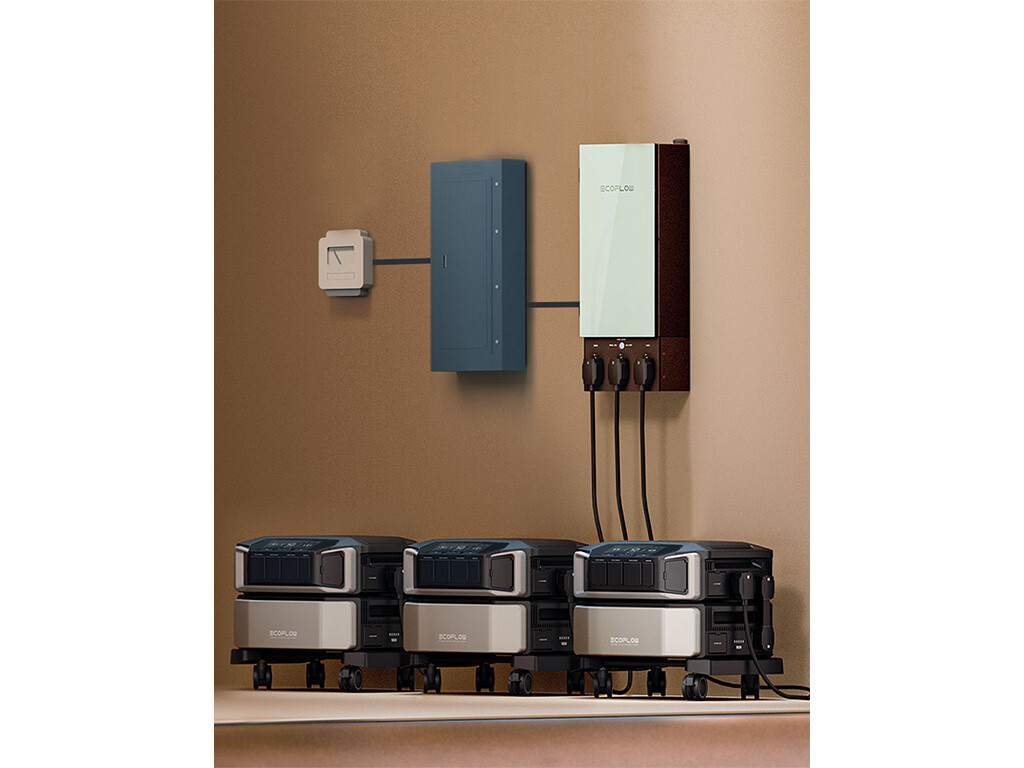
Quick Overview: Two Capable Systems With One Superior Choice
Investing in a large battery power system is not for the faint of heart. You’re dealing with serious specifications including mega-sized batteries and inverters that blow most others out of the water. While those two details are the most crucial, there’s a long list of other features to watch out for.
Anker and EcoFlow are the brands that have taken whole-home battery backup systems to a new level. These two heavy-duty power stations can deliver bigtime power that will reduce your energy bills and get you through long periods with no grid power. And they’re both exceptionally well-designed systems ready to withstand the test of time and come with incredibly easy-to-use interfaces and apps.
After taking a very close look at the EcoFlow Delta Pro Ultra and the Anker F3800, we can say that both are truly impressive units. They each offer very capable single-unit systems plus massive modular expansion to meet your particular needs or grow as they do.

However, the EcoFlow Delta Pro Ultra stands tall as the absolute best portable power station on the market, even compared to the Anker F3800. That’s because the Delta Pro Ultra offers:
- More impressive specs, including single-unit and fully maxed-out systems
- Superior solar input capabilities with high-voltage input ready for big solar panel strings
- Best output capabilities including online 0ms UPS and a seamless home integration solution
On the other hand, the Anker F3800 has its own set of strengths:
- Integrated battery unit is beneficial in some situations
- Still offers robust capabilities as a single unit or maxed-out system
- Excellent output features including smart home integration panel
Price-wise, the EcoFlow Delta Pro Ultra tends to run higher, but its higher system max capabilities and faster solar recharge speeds justify the extra investment for those who need serious power. The Anker F3800 offers a more affordable entry point into high-wattage power stations without skimping on critical features.
When you compare these on a per Wh basis, you’ll find the price to be very similar. The MSRPs hover right above $1.00 per Wh for both, but they’re typically available for closer to $0.80 per Wh. Considering the Delta Pro Ultra has superior capabilities with the same price per Wh, it’s the better value.
Due to the large battery size, both of these may be eligible for 30% solar tax credit. This can give you big bucks back at tax time, and it includes the cost of solar panels and certain accessories used to install a home backup solar system.
In the end, the EcoFlow Delta Pro Ultra stands out for its sheer expandability and performance. The solar input alone is worth the cost above the Anker system, yet the EcoFlow can also grow to much larger systems with more battery capacity and AC output. The Anker F3800 remains a solid contender that we still recommend and comes in at a lower price point, but you must understand its solar charging limitations and fully expect to stay within its modular expansion specs.
Get 5% off most EcoFlow orders with SOLARWAY5OFF discount code.

|
EcoFlow DELTA Pro Ultra |
DPU on EcoFlow DPU on Amazon |

|
Anker Solix F3800 |
F3800 on Anker F3800 on Amazon |
Head-to-Head Comparison: EcoFlow Delta Pro Ultra vs. Anker F3800
Few names carry as much weight as the EcoFlow Delta Pro Ultra and the Anker F3800. When it comes to choosing between them, it’s all about the details.
To make things simple, we’ve broken down the key areas that matter most:
- What Can These Power?
- How Long Will They Last?
- How Fast Can They Charge?
- Which Is More Portable?
- Spec Comparison Chart
- Final Verdict: Our Top Recommendation

What Can These Power? Inverter and Outputs
When you’re looking at portable power stations to power your home devices and appliances, the real muscle lies in their inverters. These devices convert DC (direct current) from the battery into AC (alternating current), making it possible to run everything from your smartphone to a refrigerator.
Not all inverters are created equal, and knowing what they can power is key.
Inverter Ratings and Device Wattage
The EcoFlow Delta Pro Ultra (DPU) has a whopping 7,200W of AC output with one unit. And if you join three DPUs, you can use up to 21.6kW at one time. The Anker F3800 tops out at 6,000W per unit and can be doubled up with two F3800 units for 12kW maximum.
Right away, the EcoFlow dominance is obvious. Yet the Anker’s specs are still amazingly capable. Here’s a quick look at the running wattage of some common devices:
- Low-watt devices 10W to 100W: Phones, laptops, WiFi routers..
- Medium-watt devices 200W to 500W: Televisions, refrigerators, desktop computers.
- High-watt devices 1,000W to 2,000W: Microwaves, hair dryers, induction cooktops, coffee makers.
- Heavy-duty appliances 3,000W and up: Large air conditioners, electric dryers, etc.

The DPU and F3800 both will have no trouble with all of the low-watt devices you can throw at them. And they’ll be able to handle a good handful of 200W to 500W devices too.
As you enter the high-watt territory, that’s where you’ll have to make sure to not overload either system with too many medium-watt devices. You might not be able to have four TVs on plus all the lights throughout your house while you use the microwave with one F3800.
And for the heavy-duty appliances, both are capable of running one as long as you use some caution. You’ll have to be aware of startup surges too, which can greatly exceed the running wattage (soft start devices can help). But if you want to power your home and heavy-duty appliances simultaneously, you should look at getting at least two DPUs or F3800s.
For very large homes or ones with extremely intensive electrical needs, the EcoFlow Delta Pro Ultra is the superior choice. It can reach nearly double the output power of the Anker F3800.
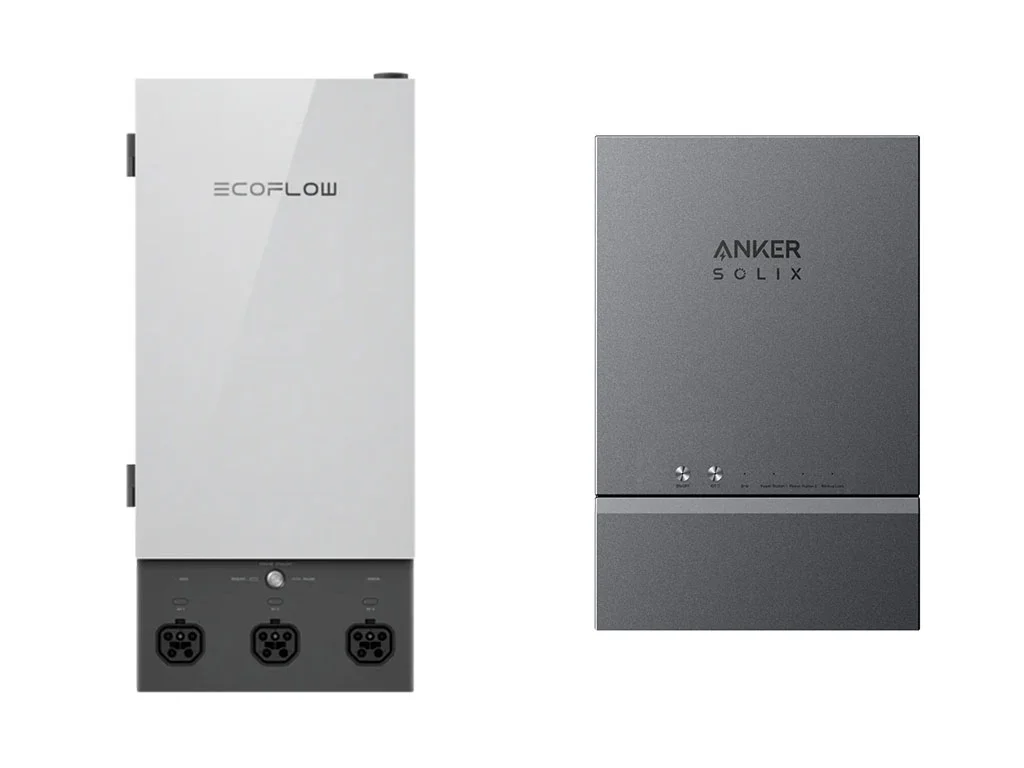
Connections and How to Power Your Home
For those wanting whole-home backup, both the Delta Pro Ultra and the Anker F3800 can be connected to a home’s electrical system using a transfer switch. This setup powers critical circuits like your fridge, lights, and home office without unplugging anything from their usual outlets.
This is another area where EcoFlow and Anker are above the competition. Both brands offer specific home integration automatic transfer switches and subpanels designed for these power stations:
These are intelligent automatic transfer switches that seamlessly switch between grid power and battery backup as needed. You can control the ways and times your home utilizes your battery systems, making sure to get the most value and reduction in your energy bill.
These systems use the high-amp and high-voltage outputs from the DPU and F3800. Both systems have robust AC outlets to power these panels.
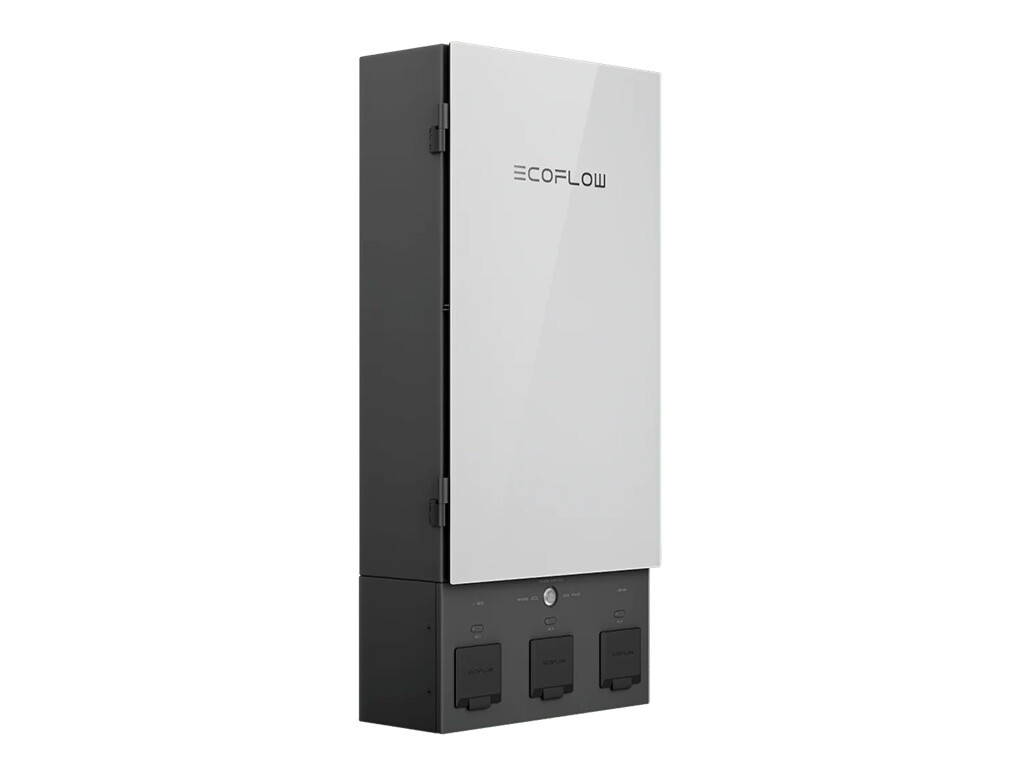
|
EcoFlow Smart Home Panel 2 |
SHP2 on EcoFlow |
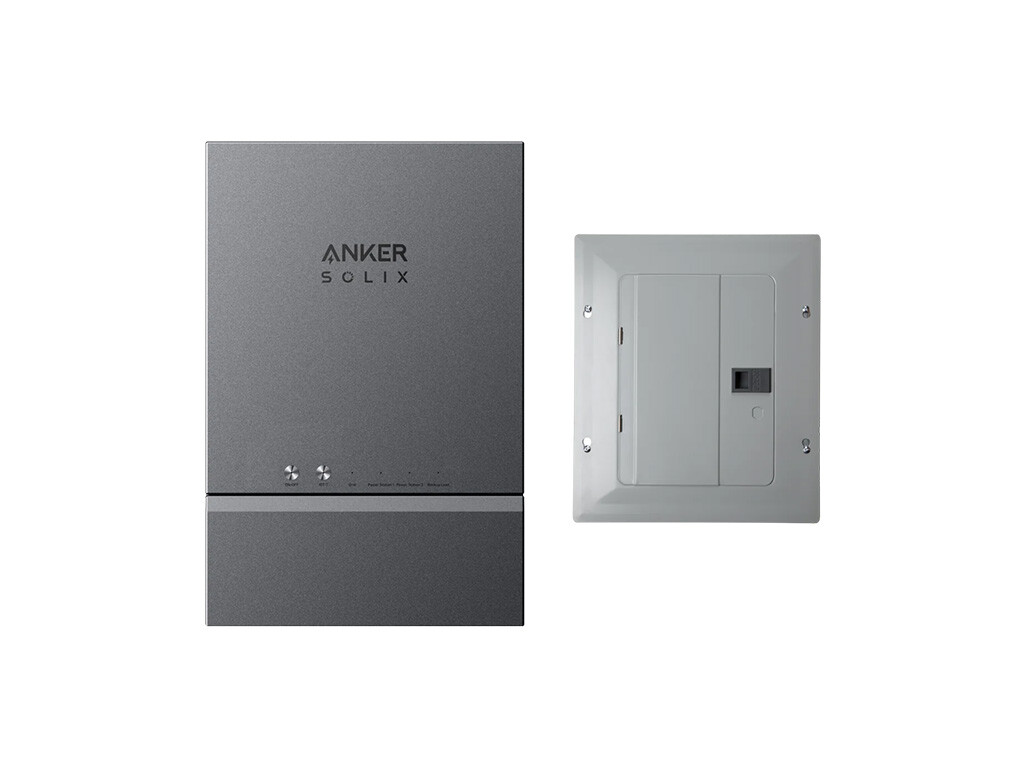
|
Anker SOLIX Home Power Panel |
Buy on Anker |
If you’re using these to power an RV, these same outlets will be extremely useful for your shore power inlet. No major changes are necessary for most RV systems. However, if you want to power a DC fuse box directly, the Delta Pro Ultra is the right choice with a 30-amp Anderson DC output. The Anker F3800 does not have a high-amp DC output.
Here’s a closer look at the outlets and connections for these two power stations:
- Standard AC outlets: Ideal for household appliances. The Delta Pro Ultra has 4 standard AC outlets, while the Anker F3800 gives you 6.
- High-amp outputs: For transfer switches, RVs, or heavy-duty devices. Both units have 240V outlets and multiple high-amp AC outputs, but the Delta Pro Ultra is the only one with a 30A DC outlet.
- USB-A & USB-C: Perfect for smaller devices like phones, tablets, and laptops. Both stations come equipped with multiple high-speed charging ports.

You’ll also find UPS (Uninterruptible Power Supply) functionality on both of these heavy-duty power stations, a critical feature for maintaining continuous power to sensitive devices during an outage. The EcoFlow Delta Pro Ultra features three outlets with online UPS (0ms) immediate switchover. It doesn’t get any better. The 240V output has <20ms UPS time for the DPU.
The Anker F3800 offers 20ms UPS switchover from three of its standard 20A outlets. It’s not as robust as the DPU and it doesn’t have an online UPS at all.
Output Verdict: The EcoFlow Delta Pro Ultra has a more powerful inverter and much higher maximum inverter capabilities with three DPU units. It also has better UPS functions and offers a high-amp DC output. It is undeniably better than the Anker F3800, although the F3800 is still a very capable home backup system with a 6kW inverter that can double to 12kW and can deliver high-voltage and high-amp power.
| Product | EcoFlow DELTA Pro Ultra | Anker Solix F3800 |
|---|---|---|
| AC Output | 7,200W | 6,000W |
| AC Output (System Max) | 21,600W | 12,000W |
| 120V Outlets | 5 (4x20A, 1x30A) | 6x20A |
| 240V Outlets | 1 | 2x25A (L14-30R & 14-50) |
| UPS / EPS | 0ms / 20ms | 20ms |
| USB-A Ports | 2x15W | 2x12W |
| USB-C Ports | 2x100W | 3x100W |
| Other DC (Anderson or other) | 1x378W (30A) | – |
| Connectivity | WiFi / Bluetooth / 4G | WiFi / Bluetooth |

How Long Will They Last? Battery Details
When it comes to battery capacity, the EcoFlow Delta Pro Ultra and Anker F3800 offer serious staying power. Measured in watt-hours (Wh), battery capacity tells you how long a power station can run your devices.
The EcoFlow Delta Pro Ultra boasts a 6,000Wh battery, while the Anker F3800 carries 3,840Wh. But how does that translate into real-world usage? Let’s break it down.
- A 60W laptop would run for about 80 hours on the EcoFlow Delta Pro Ultra and 50 hours on the Anker F3800, factoring in a 20% reduction for system inefficiencies like inverter use, heat loss, and wire connections.
- To run a bare minimum home backup system with a fridge, TV, some lights, and other small devices, you’re looking at about 600W total. The DPU can run for about 8 hours on one battery while the F3800 can only do about 5 hours.
- If you’re powering an entire bunch of household devices at about 1,000W total, that would run for around 4.8 hours on the Delta Pro Ultra and just under 3 hours on the Anker F3800. These numbers give you a sense of how long each power station will last depending on what you’re powering.
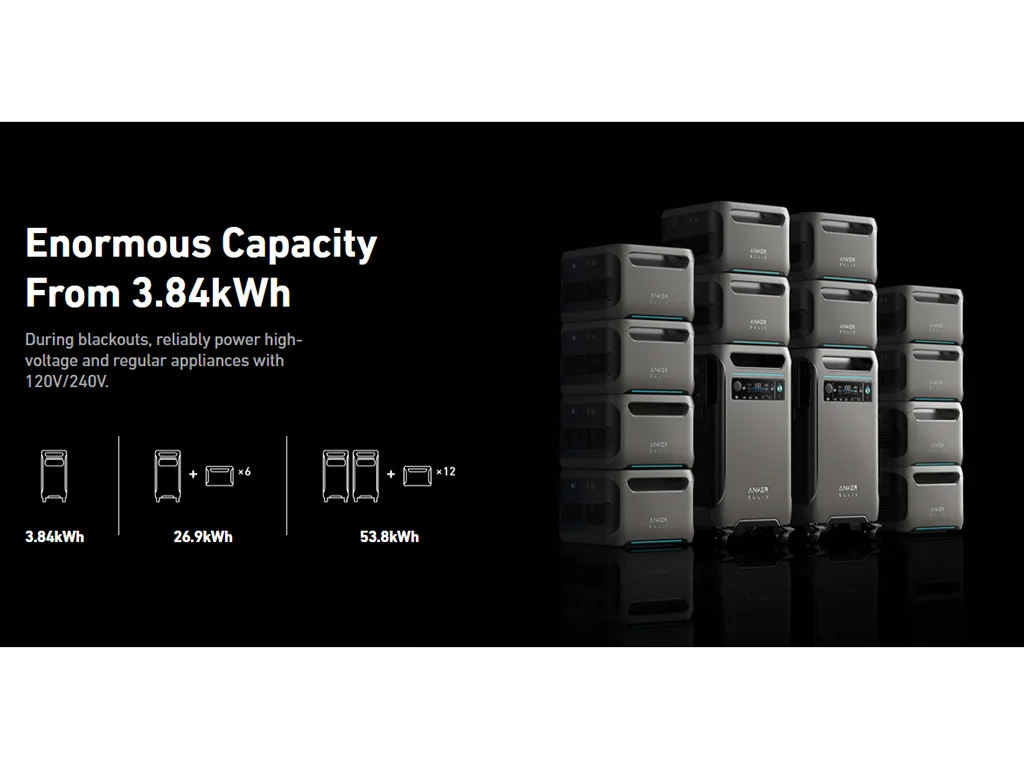
Modular Expansion
These are respectable figures on their own. But that’s just the starting point with one battery.
By adding on more battery units, you can reach into the stratosphere with how long these power stations will run your home or RV. And once again, EcoFlow goes far beyond the rest of the industry.
The EcoFlow Delta Pro Ultra supports up to 90,000Wh with additional batteries, turning it into a portable power plant. That’s three DPU units with five batteries each; 18 total units in total and a very large system.
The Anker F3800 can expand too, but not to the same extreme. Its modular batteries max out at 53,760Wh, which includes two F3800 units and six batteries each; 14 total units and still a massive system.
This can mean the difference between powering a home for a couple of days versus a full week in an off-grid situation. That same 600W load from before (a comfortable home backup system with cold food and entertainment) can run for 5 days without any recharging from the 90kWh DPU system. Or around 3 days on the F3800’s 54kWh system.

Battery Type: Safe, Reliable, Long-Lasting
Both the EcoFlow Delta Pro Ultra and Anker F3800 use LiFePO4 (Lithium Iron Phosphate) batteries. These are known for their long cycle life and safety. Each battery is rated for over 3,000 cycles, meaning you can fully charge and discharge them about 3,000 times before noticing any significant drop in capacity.
That translates into roughly 8 years of daily use before a noticeable degradation in battery capacity. And they’ll still work perfectly fine after that, they just won’t hold as much energy. They’re a serious investment in long-term energy independence, built to last. The 5-year warranty coverage from EcoFlow and Anker gives extra peace of mind that they’ll meet the test of time.
Battery Verdict: Once again, the EcoFlow Delta Pro Ultra has superior capabilities with a larger 6kWh individual battery capacity and a whopping 90kWh maximum potential. Regardless of your energy needs, the DPU can provide long-lasting off-grid energy. The Anker F3800 also offers excellent performance and battery longevity with almost 4kWh per battery and 54kWh total, far beyond most other power stations and even custom home battery backups. But its smaller capacity makes it better suited for less intensive needs.
| Product | EcoFlow DELTA Pro Ultra | Anker Solix F3800 |
|---|---|---|
| Battery | 6,000Wh | 3,840Wh |
| Battery (System Max) | 90,000Wh | 53,760Wh |
| Warranty | 5 years | 5 years |
| Battery Type | LiFePO4 / LFP | LiFePO4 / LFP |
| Battery Cycles | >3,000 | >3,000 |
| Buy Now | Buy DPU | Buy Now |
| Buy on Amazon | EcoFlow DPU on Amazon | F3800 on Amazon |
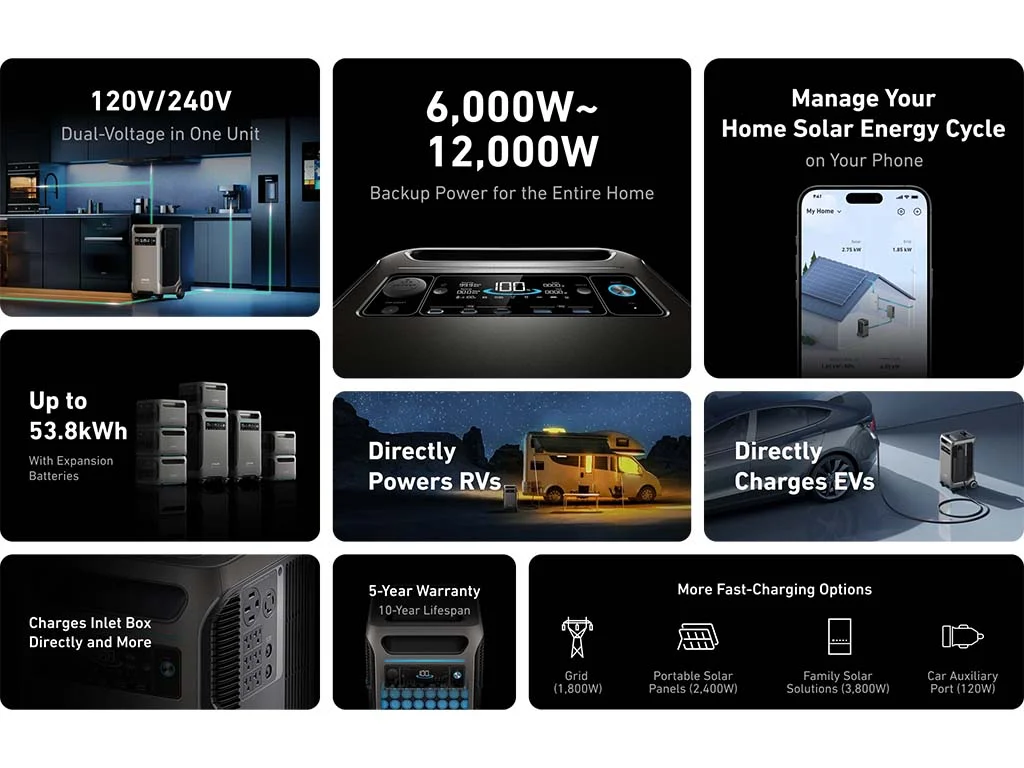
How Fast Can They Charge? Charging Inputs
When you’re relying on a portable power station, charging speed is critical. While it’s nice that these have bigtime battery capacities, being able to quickly recharge can be the difference between being stranded without power or not. When push comes to shove, these systems should be able to deliver sustainable power no matter the grid status. That’s true energy independence.
There’s no shortage of charging options here. The EcoFlow Delta Pro Ultra and the Anker F3800 can be topped off through:
- AC Charging: This is the fastest way to get your power station back up and running.
- Solar Charging: Ideal for off-grid situations. The more watts you can pull from the sun, the faster the charge.
- Fuel Generator or Car Charging: Backup options if you’re in a pinch, but not efficient for these high-capacity stations.
The EcoFlow Delta Pro Ultra pulls ahead here with a 7,200W AC input, allowing it to recharge from 0% to full in about 1 hour if you can max that out. In comparison, the Anker F3800 has an AC input of 1,800W which is the maximum output of a standard outlet (120V at 15A). It takes around 2.6 hours to charge fully Still reasonable, but noticeably slower.
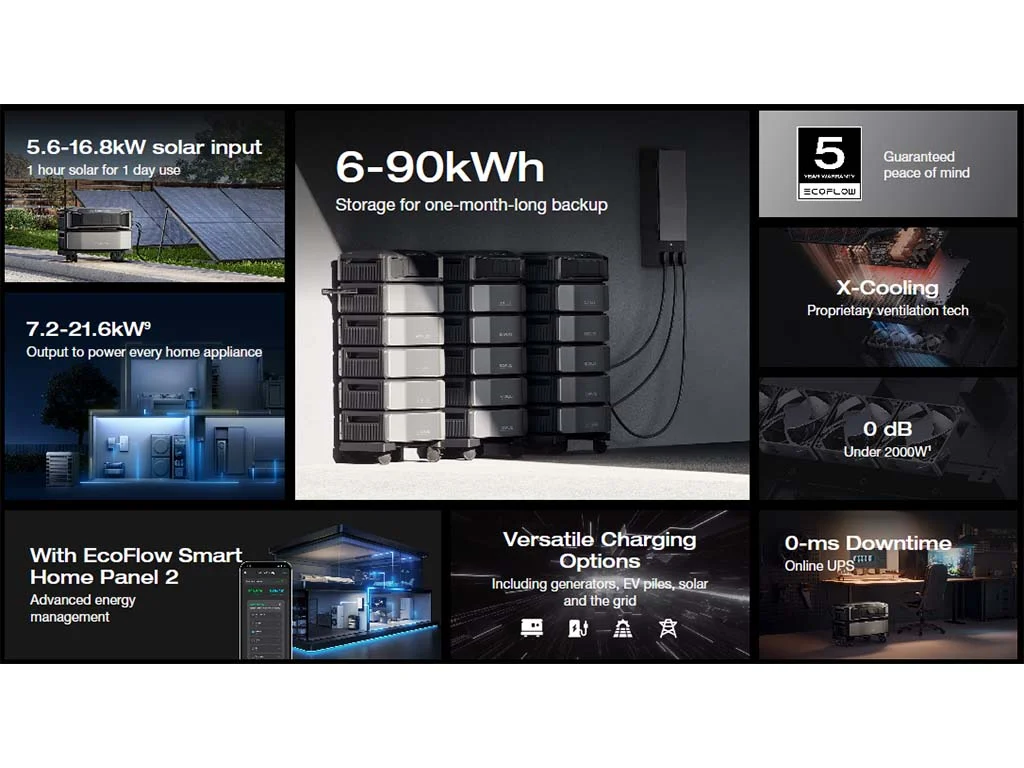
The solar charging difference is one area we feel quite strongly about. You can see that the maximum solar input spec of the Delta Pro Ultra at 5,600W overpowers the F3800’s 2,400W by a significant margin.
On top of that, the details of the solar inputs are MUCH better for the DPU. In fact, this is our least favorite aspect of the F3800. Limited to just 60V per input, many large solar panels cannot be used in series with the F3800. On the other hand, the Delta Pro Ultra offers one input with a massive 450V upper limit and the other one with a still useful 150V upper limit.
It is much easier to max out the solar charging without damaging the power station for the DPU. And when you consider maximum system sizes, the Anker unit falls short again due to its limited two units. We highly recommend the DPU over the F3800 if solar charging is a priority.
Fuel generators can be a useful way to get a quick boost of extra power when solar doesn’t cut it. The benefit of using a power station with a fuel generator is that you can still rely on the powerful inverter and batteries. Just turn on the fuel generator to quickly recharge the batteries, then enjoy silent battery power that can meet more intensive electrical demands through the high-output inverters.
Car charging is typically very slow due to car cigarette lighter ports being 120W maximum. You can use devices like the Pecron 500W Car Charger or Bluetti 560W Alternator Charger 1 to get slightly faster times. Both use standard MC4 connectors and mimic solar panel output. You cannot use the EcoFlow Alternator Charger with the DPU or F3800 since it uses specific proprietary connectors made for smaller EcoFlow units (with different battery voltages).
Charging Verdict: When solar charging is a must, we absolutely recommend the EcoFlow Delta Pro Ultra over the Anker F3800. The DPU not only has double the capacity per unit and can use three units, it also has a much better upper voltage range. The Anker F3800 offers respectable charging speeds, but its all-around is less capable in this category than the DPU, once again.

|
PECRON 500W Car Charger for Cars, RVs, etc. |
Buy on Pecron |
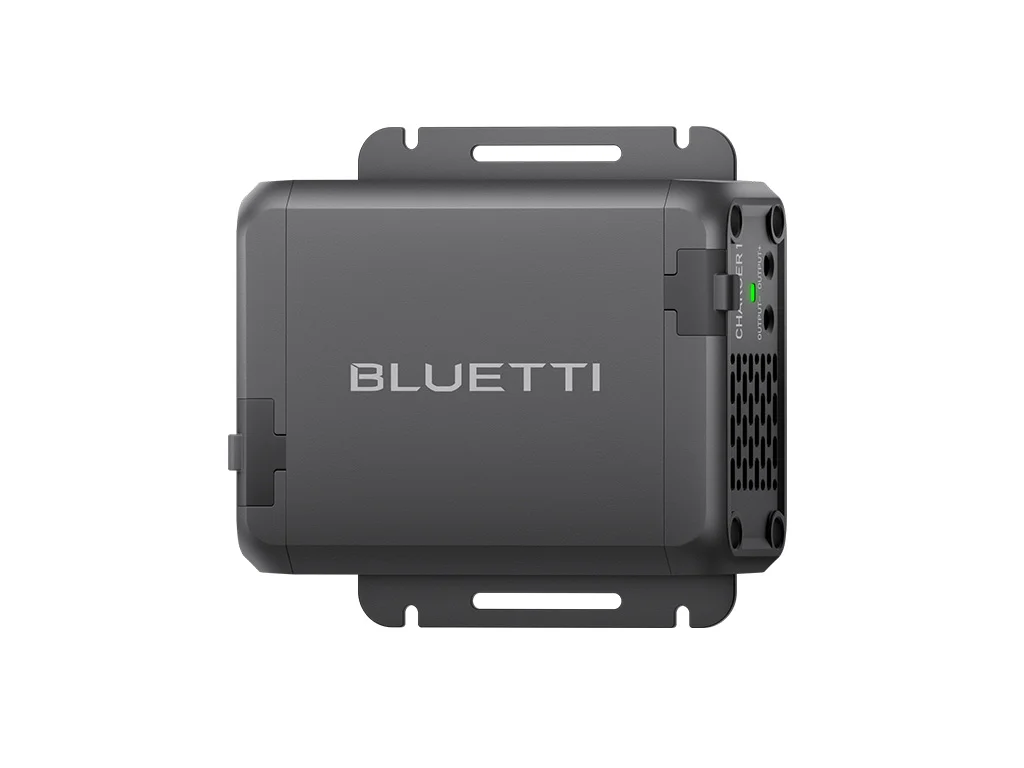
|
BLUETTI 560W Alternator Charger 1 |
Charger on Bluetti |
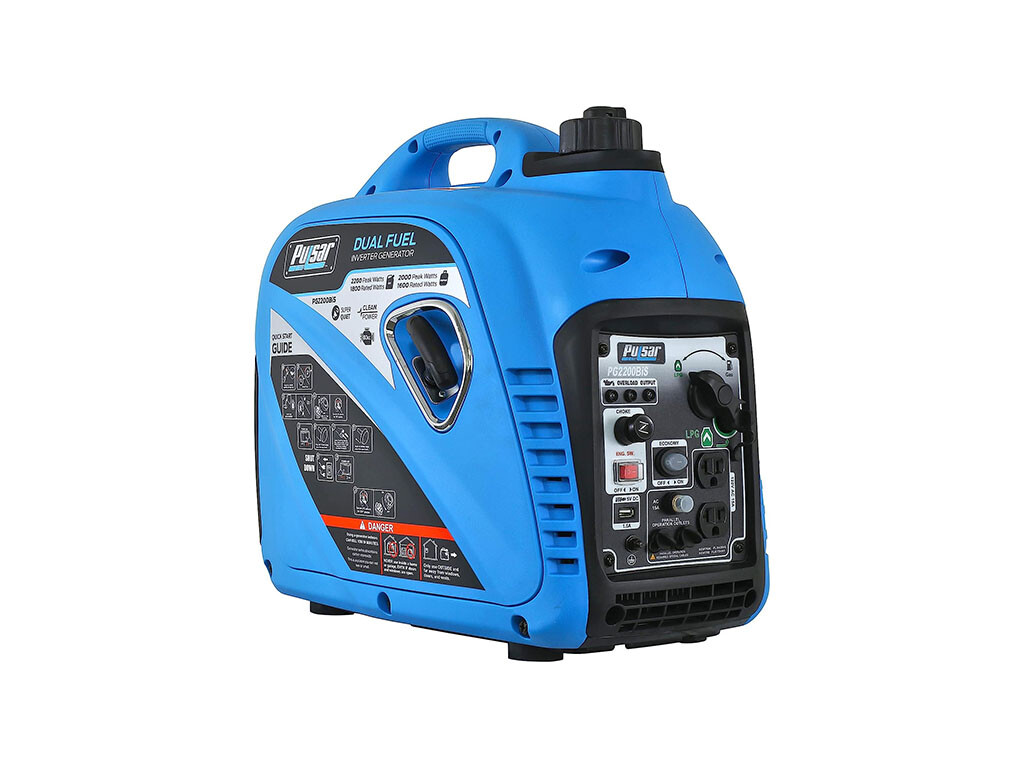
|
Pulsar 2,200W Portable Dual Fuel Generator |
Buy on Amazon |
| Product | EcoFlow DELTA Pro Ultra | Anker Solix F3800 |
|---|---|---|
| AC Input | 7,200W | 1,800W |
| AC Recharge Hours (Est.) | 1h | 2.6h |
| Solar Input | 5,600W | 2,400W |
| Solar Recharge Hours (Est.) | 1.3h | 1.9h |
| Solar Input (System Max) | 16,800W | 4,800W |
| Solar Input 1 Watts | 4000W | 1200W |
| Solar Input 1 Volts Min | 80V | 11V |
| Solar Input 1 Volts Max | 450V | 60V |
| Solar Input 1 Amps | 15A | 27A |
| Solar Input 2 Watts | 1600W | 1200W |
| Solar Input 2 Volts Min | 30V | 11V |
| Solar Input 2 Volts Max | 150V | 60V |
| Solar Input 2 Amps | 15A | 27A |

Which Is More Portable? Weight and Dimensions
Size and weight are major factors that affect usability. Unlike DIY home battery systems, these power stations offer the serious advantage of being able to go with you. Whether it’s on a road trip, camping adventure, or you’re moving to a new home, both of these power stations can come along.
The EcoFlow Delta Pro Ultra weighs in at 70 lbs (32 kg). For this level of power station, that’s insanely light. It does this by keeping the battery units separate. So you’ll have to add on each battery unit with another 116.4 lbs (52.7 kg) each. You can stack these and there is a wheeled cart to make maneuverability slightly easier. But it’s a beast of a unit with the weight to match.
The Anker F3800 tips the scales at a whopping 132 lbs (60 kg). The difference is that it has an integrated battery in the inverter unit. While it’s still a hefty product to move around, it’s just one item. having just one unit to move might be easier for certain needs, like in an RV or in use cases where portability is a must.
Portability Verdict: While both units are undeniably large and heavy, the Anker F3800 takes the portability advantage with an integrated battery pack. You can use just one device to provide bigtime power anywhere you need it. The Delta Pro Ultra is slightly lighter but you have to use the inverter unit with an external battery always.
| Product | EcoFlow DELTA Pro Ultra | Anker Solix F3800 |
|---|---|---|
| Weight (lbs) | 70lbs | 132lbs |
| Weight (kg) | 31.7kg | 60kg |
| Dimensions (in) | 27.2×18.9×8.4in | 27.6×15.3×15.6in |
| Dimensions (mm) | 690x481x214mm | 702x388x395mm |
Specs Comparison Chart
Below is a detailed comparison chart to help you see the full specs side-by-side.
| Product | EcoFlow DELTA Pro Ultra | Anker Solix F3800 |
|---|---|---|
| Battery | 6,000Wh | 3,840Wh |
| Battery (System Max) | 90,000Wh | 53,760Wh |
| AC Output | 7,200W | 6,000W |
| AC Output (System Max) | 21,600W | 12,000W |
| AC Input | 7,200W | 1,800W |
| AC Recharge Hours (Est.) | 1h | 2.6h |
| Solar Input | 5,600W | 2,400W |
| Solar Recharge Hours (Est.) | 1.3h | 1.9h |
| Solar Input (System Max) | 16,800W | 4,800W |
| Warranty | 5 years | 5 years |
| Weight (lbs) | 70lbs | 132lbs |
| Weight (kg) | 31.7kg | 60kg |
| Dimensions (in) | 27.2×18.9×8.4in | 27.6×15.3×15.6in |
| Dimensions (mm) | 690x481x214mm | 702x388x395mm |
| Solar Input 1 Watts | 4000W | 1200W |
| Solar Input 1 Volts Min | 80V | 11V |
| Solar Input 1 Volts Max | 450V | 60V |
| Solar Input 1 Amps | 15A | 27A |
| Solar Input 2 Watts | 1600W | 1200W |
| Solar Input 2 Volts Min | 30V | 11V |
| Solar Input 2 Volts Max | 150V | 60V |
| Solar Input 2 Amps | 15A | 27A |
| Battery Type | LiFePO4 / LFP | LiFePO4 / LFP |
| Battery Cycles | >3,000 | >3,000 |
| 120V Outlets | 4 | 6x20A |
| 240V Outlets | 1 | 2x25A (L14-30R & 14-50) |
| UPS / EPS | 0ms / 20ms | 20ms |
| USB-A Ports | 2x15W | 2x12W |
| USB-C Ports | 2x100W | 3x100W |
| Other DC (Anderson or other) | 1x378W (30A) | – |
| Connectivity | WiFi / Bluetooth / 4G | WiFi / Bluetooth |
| User Manual | User Manual | User Manual |
| Buy Now | Buy DPU | Buy Now |
| Buy on Amazon | EcoFlow DPU on Amazon | F3800 on Amazon |

Final Verdict: Our Top Recommendation
After a close comparison of the EcoFlow Delta Pro Ultra and the Anker F3800, there’s no way around finding the Delta Pro Ultra as the superior choice. It has more inverter power, more battery capacity, and better outputs. It also has significantly better solar charging inputs, a category that can make or break your decision alone.
Having said that, the Anker F3800 is not a bad product. Our least favorite feature is the more limited solar input. But if you’re not trying to max that out and the rest of the specs meet your needs, it is a premium power station worth every penny. Nothing in our research gave us room for pause against recommending it either. It’s just not able to compete with the extreme performance of the Delta Pro Ultra.
| EcoFlow Delta Pro Ultra | Anker Solix F3800 |
|---|---|
Here’ a quick look at the comparison:
- Inverter and Outputs: The Delta Pro Ultra offers more powerful output (7.2kW to 21.6kW), faster UPS transfer, and better high-amp options, making it perfect for home backup and RV setups. The Anker is still bigtime whole-home power with 6kW to 12kW AC output, along with 240V and high-amp AC outlets.
- Battery Capacity: With a base capacity of 6,000Wh and the ability to expand up to 90,000Wh, the Delta Pro Ultra provides unmatched long-term power, especially for larger off-grid setups. The Anker F3800, while smaller, still offers solid capacity for less demanding situations with ~4kWh to 54kWh available.
- Charging Speeds: The Delta Pro Ultra dominates with its rapid AC and solar charging speeds, making it the better choice if quick recharges are important to you.
- Portability: The Anker F3800 is slightly better suited for portability due to its integrated battery pack, although it still weighs more than one person can easily carry. The DPU must use the inverter unit plus one external battery unit.
- Value: Since these are usually offered at a similar per Wh price, the EcoFlow Delta Pro Ultra is the better value due to its superior features. It’s also a better investment since it can grow with your needs to reach much higher levels.
Final Recommendation: Without a doubt, the EcoFlow Delta Pro Ultra is better than the Anker Solix F3800. It offers more single-unit and maximum system power, plus exceptional solar charging inputs and other useful features. However, the Anker F3800 is still a great choice if you fit within its specs and are fine staying within its solar charging limits.
Get 5% off most EcoFlow orders with SOLARWAY5OFF discount code.

|
EcoFlow DELTA Pro Ultra |
DPU on EcoFlow DPU on Amazon |

|
Anker Solix F3800 |
F3800 on Anker F3800 on Amazon |
Final Thoughts
We highly recommend the EcoFlow Delta Pro Ultra as the best portable power station and solar generator available today. It is money well spent to get a top-tier product that no one else matches.
If you’re still undecided, check out our individual reviews for both the EcoFlow Delta Pro Ultra and the Anker Solix F3800.
Whether you’re powering your home during an outage or keeping your RV trip smooth, invest in reliable portable power today. Leave power outages and grid concerns in the past.







